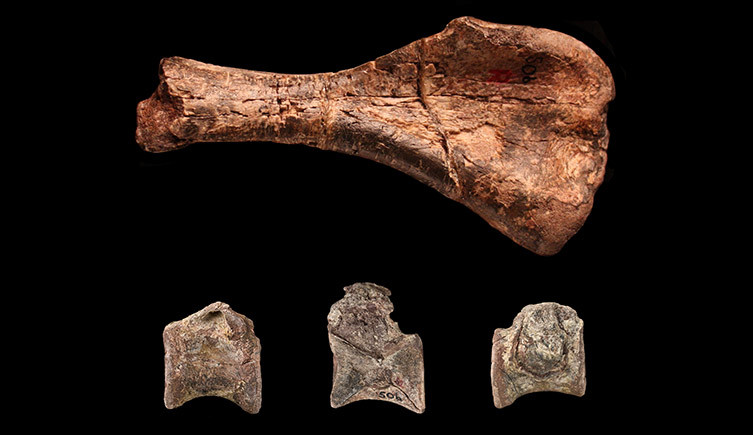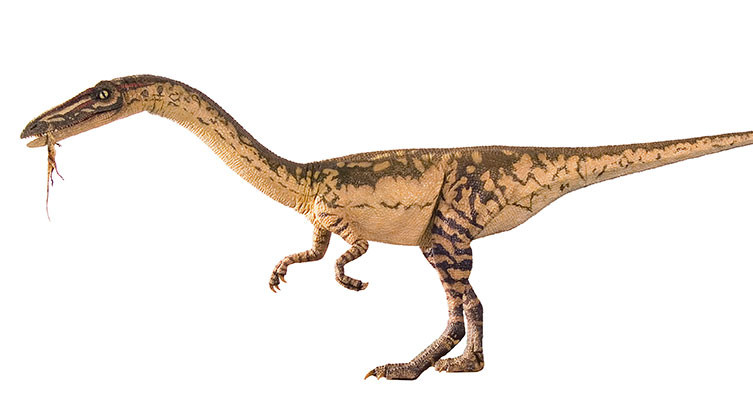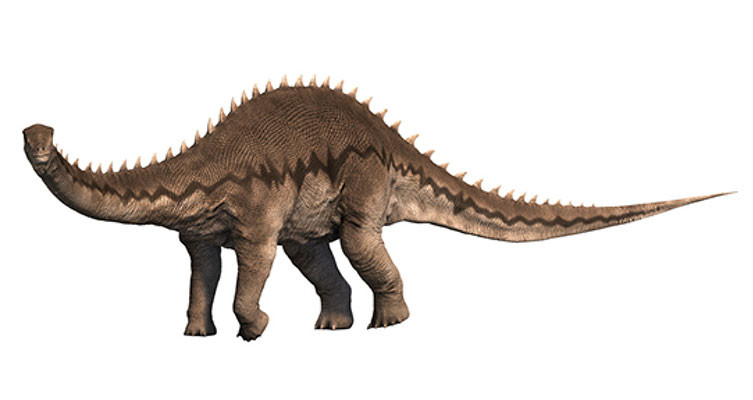Dinosaurs, those awe-inspiring creatures, roamed the Earth for an incredible span of time. But where exactly did dinosaurs live? To understand dinosaur habitats, we need to journey back millions of years to a world vastly different from our own – the Mesozoic Era. This era, long before modern humans (Homo sapiens) appeared, is when non-bird dinosaurs thrived, between approximately 245 and 66 million years ago.
The Mesozoic Era is divided into three distinct periods: the Triassic, Jurassic, and Cretaceous. During this immense timeframe, the very geography of our planet was in constant flux. Continents shifted and climates changed dramatically, profoundly influencing where different dinosaur species lived and evolved. Let’s explore the changing dinosaur locations throughout these periods.
Triassic Period: Dinosaurs in a World of Pangaea (252 to 201 Million Years Ago)
In the Triassic Period, the world’s landmasses were joined together in a supercontinent known as Pangaea. This single, massive continent meant that geographical barriers were minimal, and early dinosaurs could potentially roam across vast stretches of land. While we might think of dinosaurs as inhabiting specific countries today, in the Triassic, such distinctions were nonexistent.
The Triassic climate was generally hot and dry, with extensive deserts covering much of Pangaea. Unlike our current world, there were no ice caps at the poles. This warm, arid environment shaped where early dinosaurs could flourish. Reptiles, including the first dinosaurs, are well-suited to hotter climates due to their water-conserving skin and kidneys.
 Nyasasaurus Fossil Fragments: Evidence of Early Dinosaurs in the Triassic Period
Nyasasaurus Fossil Fragments: Evidence of Early Dinosaurs in the Triassic Period
Fossil evidence, like fragments from Nyasasaurus, one of the earliest dinosaur candidates, suggests these creatures inhabited regions that are now parts of Africa. However, given Pangaea’s nature, similar dinosaurs could have lived across what we now recognize as South America, parts of Asia, and even Australia, as these lands were connected at the time. The key factor wasn’t modern continental location, but rather suitable Triassic environments across Pangaea.
Towards the end of the Triassic, dramatic geological events began to reshape the world. Earthquakes and massive volcanic eruptions initiated the breakup of Pangaea, marking the early stages of the North Atlantic Ocean’s formation. These changes would have a significant impact on dinosaur distribution in the periods that followed.
 Coelophysis Model: Representing Late Triassic Dinosaur Habitats
Coelophysis Model: Representing Late Triassic Dinosaur Habitats
Dinosaurs like Coelophysis, a predator from the Late Triassic, lived in areas experiencing these environmental shifts. Their fossils, found in what is now North America, provide clues about dinosaur habitats in a world undergoing significant transformation.
Jurassic Period: Habitats on Laurasia and Gondwana (201 to 145 Million Years Ago)
The Jurassic Period saw Pangaea further fragmenting into two large landmasses: Laurasia in the north and Gondwana in the south. This continental split began to create more regional differences in dinosaur distribution. While complete separation hadn’t yet occurred, and some land connections persisted early in the Jurassic, distinct dinosaur faunas started to emerge in these different regions over time.
The Jurassic climate became somewhat cooler and wetter than the Triassic, although still warmer than today due to higher atmospheric carbon dioxide levels. Increased rainfall and the formation of seas between the separating landmasses led to the expansion of lush vegetation. Ferns, horsetails, and towering conifer forests, including sequoias and monkey puzzles, became widespread.
This flourishing plant life heavily influenced where herbivorous dinosaurs lived. Giant sauropods, like Diplodocus, Apatosaurus, and Brachiosaurus, evolved to immense sizes, thriving on the abundant vegetation. Their fossils are primarily found in regions corresponding to former parts of Laurasia and Gondwana, including North America, Europe, Africa, and South America, indicating their widespread distribution across these landmasses.
 Diplodocus Reconstruction: Illustrating Jurassic Period Dinosaur Locations and Lush Habitats
Diplodocus Reconstruction: Illustrating Jurassic Period Dinosaur Locations and Lush Habitats
The Jurassic Period exemplifies how changing geography and climate directly impacted dinosaur habitats. The emergence of distinct continents, even in early stages, played a role in shaping where different dinosaur groups evolved and flourished.
Cretaceous Period: Dinosaurs Across Diverse, Separating Continents (145 to 66 Million Years Ago)
By the Cretaceous Period, the continents were drifting further apart, resembling more closely the world map we know today, though still in different positions. This increased continental separation led to even greater diversification of dinosaurs in different parts of the globe. Dinosaurs on different continents evolved in relative isolation, resulting in unique dinosaur communities in various regions.
Sauropods reached their maximum size during the Cretaceous, with titanosaurs like Patagotitan becoming the largest land animals ever. These giants, and other dinosaur groups, inhabited diverse environments across the increasingly separated continents. Fossils from this period reveal dinosaurs lived in locations corresponding to modern North and South America, Europe, Asia, Africa, and even Antarctica, although the Antarctic dinosaurs lived in a warmer, less icy environment than today.
The Cretaceous Period also saw the rise of flowering plants and the diversification of insects like bees, further shaping terrestrial ecosystems and, consequently, dinosaur habitats. Sea levels fluctuated significantly, creating shallow inland seas that further fragmented continents and influenced coastal dinosaur habitats. Europe, for instance, was an archipelago of islands during parts of the Cretaceous.
The end of the Cretaceous Period, marked by a mass extinction event, abruptly ended the reign of non-bird dinosaurs, regardless of where they lived across the globe.
Conclusion: A World in Motion, Dinosaur Habitats in Flux
So, Where Did Dinosaurs Live? They lived everywhere suitable environments existed throughout the Mesozoic Era. Initially, in the unified supercontinent of Pangaea, dinosaurs could potentially roam across vast interconnected landscapes. As Pangaea broke apart, dinosaur habitats became more geographically defined by the emerging continents of Laurasia and Gondwana, and finally, by the more separated continents of the Cretaceous.
Understanding where dinosaurs lived is not just about pinpointing locations on a map, but about grasping the dynamic nature of Earth’s geography and climate over millions of years. Dinosaur distribution was constantly shaped by continental drift, climate change, and evolving ecosystems, painting a picture of a prehistoric world in perpetual motion.
